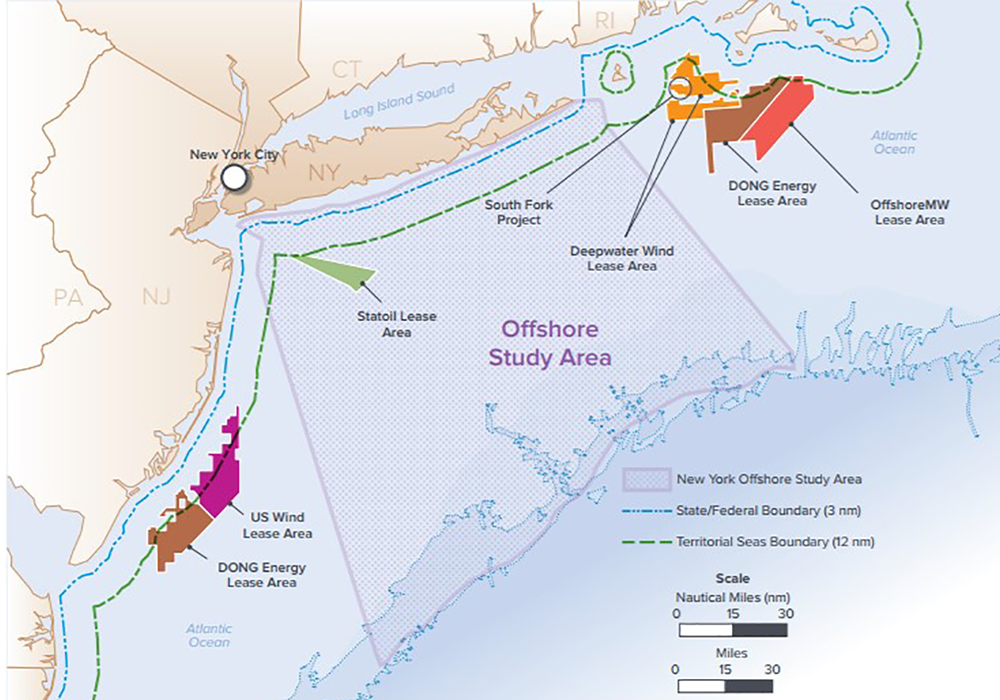State of New York
New York State Offshore Wind Master Plan
2020 National Planning Achievement Silver Award for Environmental Planning
First Offshore Wind Comprehensive Master Plan in the U.S.
Creating A Mindful Roadmap to Clean Energy
To develop offshore wind in a manner that is sensitive to marine resources while addressing market barriers and aiming to lower costs, the New York State Energy Research and Development Authority (NYSERDA) led the creation of the first offshore wind comprehensive master plan in the United States.
Supported by 20 in-depth studies and extensive community and stakeholder outreach and engagement, the New York State Offshore Wind Master Plan utilizes a sensitivity analysis tool to identify areas in the New York Bight that present the greatest opportunity for the development of offshore wind energy while presenting the lowest risk to environmental, maritime, economic, and social concerns.
The plan is the recipient of a 2020 National Planning Achievement Award for Environmental Planning.
To analyze the 64,000 square mile area, a sensitivity analysis tool was created to consider the risk of offshore wind development on animal density and the vulnerabilities of multiple species. The master plan initially laid out the groundwork for New York's unprecedented commitment to develop 2,400 megawatts of offshore wind energy by 2030. It is now serving as a foundation for achieving Gov. Andrew Cuomo's nation-leading goal of 9,000 megawatts by 2035.
The plan has already demonstrated a significant impact on reducing the costs, risks, and uncertainties for renewable energy development with New York's first statewide solicitation resulting in a record-setting 1,700 megawatts in project awards, enough to power up to one million homes, create over 1,600 jobs, and generate $3.2 billion in economic activity for New York State.

After consultation with a diverse group of stakeholders, the team analyzed potentially affected resources within a 16,740-square-mile offshore study area.


